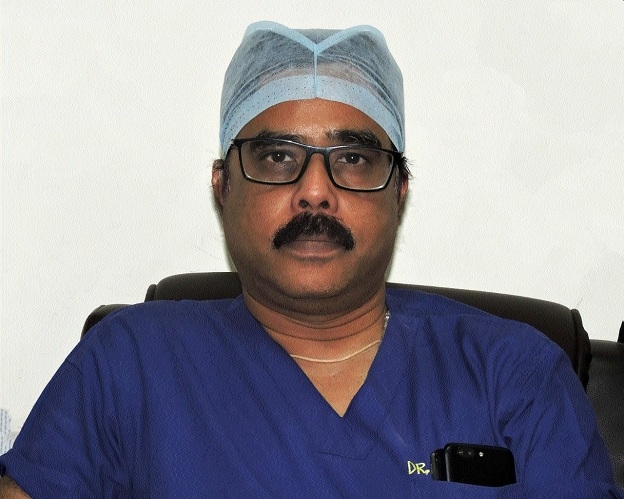Dr Rajesh Sinha throws light on diabetic foot
| Date :07-Oct-2020 |

Staff Reporter :
RAIPUR,
Diabetic foot is one of the most common problems worldwide. India has become the capital of diabetes now, informed Dr Rajesh Sinha, Senior Consultant, General and Laparoscopic Surgeon of NH MMI Narayana Super specialty Hospital. Dr Sinha informed that in year 2020, according to IDF, 463 million people have diabetes in the world and 77 million people in India are affected with the diabetes.
Diabetic foot is one of the most debilitating and dreadful complication of the diabetes. Dr Sinha further informed that Diabetic foot is the long term complication of the diabetes. When an ulcer, an infection or gangrene develop in the feet of a diabetic patient then it is called diabetic foot. There are three factors which lead to development of a diabetic foot. 1) Diabetic neuropathy, 2) Diabetic vasculopathy and 3) infection. In a diabetic patient of very long duration the sensation of the feet is lost, also the blood supply of the feet is compromised and due to high blood sugar, chances of infection is high. This all leads to development of a diabetic foot.
Moreover, the symptoms of the diabetic foot may be a loss of feeling, numbness or tingling sensation, blisters or other, wounds with or without pain, skin discoloration, redness, wounds with or without pus discharge, fever, chills, etc. If not treated at time, it may lead to some very serious complications like skin and bone infections, abscess, gangrene, sepsis, foot deformity, charcot foot and sometimes it may lead to amputation of the foot. Dr Sinha informed that prevention is the key to success. Patient who have diabetes to avoid diabetic foot he should be very vigilant about their feet.
They should take following steps to prevent diabetic foot. Check the feet each day, wash the feet daily, wear the supportive shoes and socks, promote blood flow to their feet by doing exercises and walking. Trim the nails carefully, protect the feet from extreme temperature, receive regular examinations of the feet, control blood sugar, avoid smoking. One should see a doctor if changes in skin colour of the feet is visible, swelling in the foot or ankle, temperature changes in the feet, persistent sores on the feet, pain or tingling in the feet or ankles, in growing toenails, fungal infections of the feet, dry and cracked skin and signs of infection.